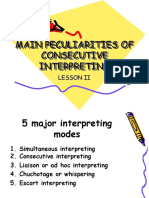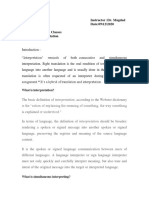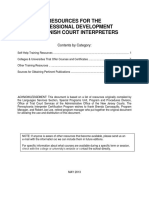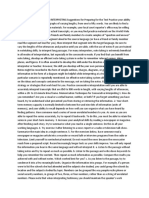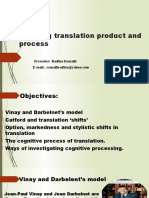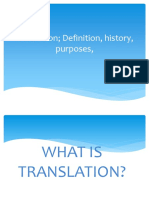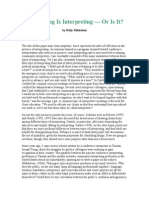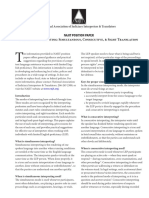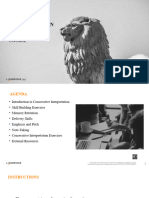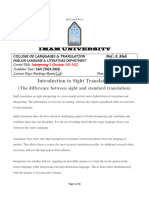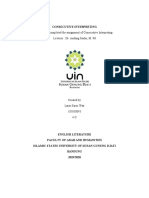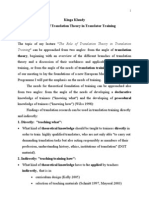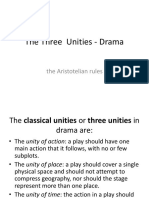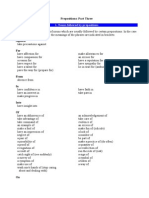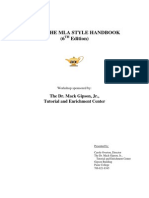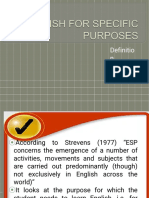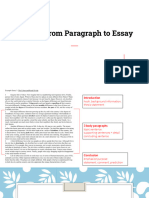100% found this document useful (3 votes)
1K views21 pagesIntroduction To Consecutive Interpreting
This document provides an introduction to consecutive interpreting, including a comparison to simultaneous interpreting. It discusses the types of translation and interpretation, focusing on consecutive interpreting. Examples of consecutive interpreting are also provided to illustrate the process.
Uploaded by
Fahiem ChaucerCopyright
© © All Rights Reserved
We take content rights seriously. If you suspect this is your content, claim it here.
Available Formats
Download as PPTX, PDF, TXT or read online on Scribd
100% found this document useful (3 votes)
1K views21 pagesIntroduction To Consecutive Interpreting
This document provides an introduction to consecutive interpreting, including a comparison to simultaneous interpreting. It discusses the types of translation and interpretation, focusing on consecutive interpreting. Examples of consecutive interpreting are also provided to illustrate the process.
Uploaded by
Fahiem ChaucerCopyright
© © All Rights Reserved
We take content rights seriously. If you suspect this is your content, claim it here.
Available Formats
Download as PPTX, PDF, TXT or read online on Scribd
/ 21

